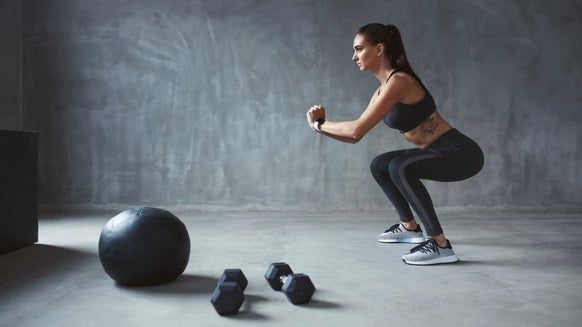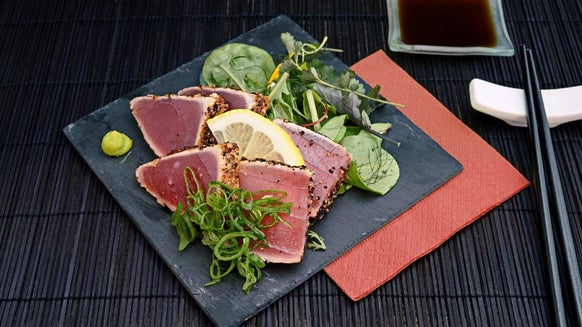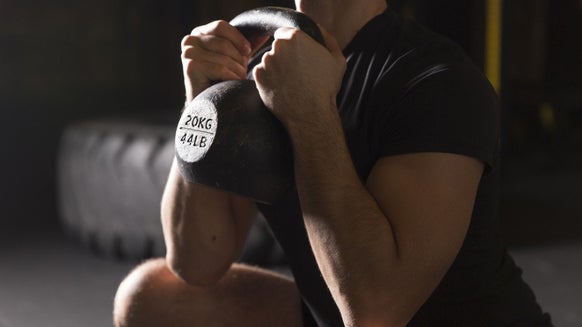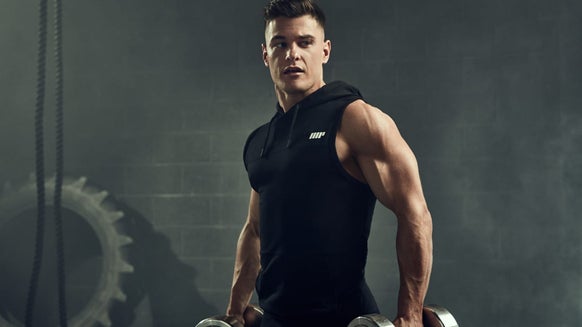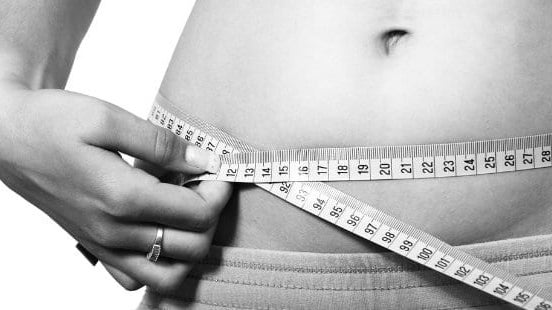Mindful Muscle Gains | 6 Steps To Mastering The Mind-Muscle Connection

Walk into any gym across the planet and you are likely to see hard working, muscle straining gym rats lifting various apparatus in front of a mirror and flexing their muscles...Sometimes it makes the “regular” people uncomfortable. They think it is simply vanity. They do not understand its purpose and how posing can be an essential ingredient to building a muscular physique.
The late 1960’s heralded competitors such as Serge “The Myth” Oliva & Frank Zane who took posing to a higher standard than their forebears.
Weight training was not as simple as moving weights from one point to another. He saw the importance of focusing on the process of stimulating, firing and feeling the muscle contraction rather than just making the outcome (the weight lifted) the centre of his work outs.
One method of improving your ability to build more dense muscle and create more forceful muscle contractions is to master the “mind-muscle connection”. Only then will you be able to fine tune your nerves and feed your muscle with the correct stimulus for maximal gains. This article will teach you a method to build this all-important technique!
What is the Mind Muscle Connection? Benefits?
This phenomenon is commonly discussed and used by the world’s best body builders. It refers to the ability of:
? Consciously providing greater neural stimulation to a specific muscle (or group of muscles) in order to maximise its contractile force.

There are a couple of ways for a muscle to create and transfer more force:
? Firstly, it can contract a greater number of fibres.
? Alternatively, it can contract at a greater speed.
Both of these muscular characteristics can occur only if the amplitude of neural stimulation (amount of nerve signals sent to the muscle) is increased.
Normally this is controlled subconsciously. However, when the load is greater, or if you aim to optimise your muscle training stimulus, you may want or need to consciously concentrate your mind on visualising the muscle contraction.
However, it is not a given that this ability will be improved simply through regular weight training. Certainly the subconscious component will improve, however the additional benefit of this process is unlikely to develop without hard work. Also, nerves and the ability to send specific neural signals to the muscle, will fatigue long before a muscle does, meaning you are left trying desperately to connect to your muscle without any further gain.
This is where Mind-Muscle training: the art of posing and visualisation can assist your muscle growth.
Developing the Mind-muscle connection
Professional body builders, such as those gracing the Olympia stage, are masters of the mind-muscle connection. They already have the skill of consciously stimulating maximal muscle fibres when posing and lifting weights.. This is born of practice, concentration, time and… more practice.
However, many amateur body builders will struggle to develop this skill. Specific areas of the brain (the motor cortex) are in control of the various areas of your body. The more you practice and repeat a behaviour, such as contracting a muscle, the more defined the specific part of the cortex becomes.
Even thinking about a specific muscle group or movement can assist with increasing the size and definition of the appropriate part in your brain (1.)
Mindful Muscle™ Training
Mindful Muscle™ training is a method of building and maintaining the mind-muscle connection which I created to assist rehabilitation of injured muscle.
However, it is a highly useful technique which can be used by body builders to gain even greater benefit from their weight lifting sessions.
STEP #1 Sensory Concentration
The first stage is Sensory Concentration and is simple to incorporate into your standard training.
It is actually fairly difficult in practice to concentrate on a specific muscle group for the 30-60 minutes spent in the gym, and sometimes using this technique can assist the process.

? The first component of the process is to pay close attention to what you feel whilst performing your warm up lifts. Take notice of when you may feel the sensation of a stretch at the muscle’s longest point, and what the muscle feels like when it is shortened into a fully contracted state.
? Take time and ensure your warm up sets are performed slowly and deliberately with no less than 50% of your maximum weight for any particular exercise. If at any point you feel “nothing” in your muscles (no tension, no tightness, no stretch), switch your attention to how the weight feels in your hands or on your back (if squatting).
? Think about your grip or your abdominals and then after a moment return your thoughts to the muscle and in most cases that feeling of tension or pressure will return where you want it- back inside the target muscle.
? Sustain the “feeling” of sensations in the target muscle as you ramp up to your working sets. Too often a weight is used which is difficult for the muscle to shift (and as such helps build muscle) but this occurs at the expense of the neural component of the lift. The first two sets prior to a working set should use the initial technique of Sensory Concentration.
STEP #2 Movement Visualisation
The next stage of your programme should now be using a weight specific to maximally promote hypertrophy; as such a 75-85% 1 repetition maximum should be utilised (2). As the weight increases the neural demand will be greater and fatigue is likely to occur sooner, and therefore more conscious effort will be required to sustain the mind-muscle connection.
However, at this stage we need to switch our focus away from the stretch and contraction of the muscle. Instead of being inside the muscle, we now need to imagine we are watching ourselves from above and our specific focus should be placed on the movements we are performing.

For example, in a squat we can visualise the movement of our thigh bones and shin bones as they flex and extend...
? We can imagine they are like springs absorbing pressure and weight as we descend and propelling us upwards to release the pressure as we ascend. This is called an external focus of attention, and has been demonstrated to increase the maximum voluntary contraction of muscle and improve nerve and muscle motor patterns during physical performance (3).
? When we get “inside the muscle” and will ourselves to contract and flex the muscle this is an internal focus of attention, which has been shown to reduce maximal muscle contraction and cause greater co-contraction of the antagonist muscle (4).
In the example of a squat this would mean greater hamstring activity than normal on the concentric quadriceps contraction to move from a deep squat into standing. Obviously we want to activate maximal muscle at all times and want optimal motor patterning, especially when a weight is being used which is likely to prevent us concentrating on how the muscle feels during the exercise.
STEP #3 Getting inside the muscle
At this stage we can use the physiological changes occurring in the muscle to effectively jump straight inside the muscle tissue, or revert to an internal focus of attention.
This is where the professionals will start their work out, but don’t be dismayed- although the skill takes time to master- with practice you can develop the ability.

Internal focus of attention is where you concentrate fully on the flexing and tension inside the muscle, rather than the movement of the limbs.
Visualisation can be focused upon your ability to shorten and tense the muscle fibres, as well as the feeling of eccentrically lengthening under load. A common physiological mechanism can assist with this process: The Pump!
STEP #4 Using the PUMP
The pump is a common physiological effect of resistance training and involves changes in the fluid balance around the muscle. When you perform intense muscular contractions the blood which should be travelling away from the muscles is prevented from doing so because the contracting muscles compress the veins in that area (5).

However, the arteries continue to push more blood in, resulting in greater concentrations of intramuscular blood plasma. This blood plasma cannot stay in the smaller blood vessels and instead travels into the interstitial spaces.
This subsequently also backs up as the spaces get more and more filled, and this causes a flow of plasma back into the muscle (reperfusion) (6). This flow of extra blood into the working muscle is known as “cellular swelling” or “The Pump”, and is where the muscle is filled with blood.
? The increases in fluid and pressure result in an unusual sensory experience, as the stretch receptors within the muscle fibres are inundated with new information. These receptors (the Golgi tendon organ) send new and novel stimulus to your brain which allows you to have direct sensory feedback as you contract and relax your muscle.
? It gives you a real time update on how much tension is being applied through the muscle fibres. As mentioned previously this is not readily possible to feel in normal contractions, and this “extra” information can facilitate you to “get inside” and “feel” the workings of the muscle.
STEP #5 Staying inside the muscle
Getting the feeling of internal focus of attention is one thing; it is another thing entirely to sustain this feeling throughout a 45 minute work out.
This is where the Weider Principle of isotension comes into play (7). Between sets your muscle may fatigue and it could be difficult to re-encourage the neural pathway for the next set. Rather than let this occur iso-tension should be utilised to keep the nerves firing.

A set of 5-8 isometric (static) contractions of the target muscle, with approximately 10 seconds rest in between will allow the muscle to partially rest but also sustain the neural stimulation of the muscle.
This would obviously extend the rest time between sets, but facilitates the muscle to be best prepared for the next working set.
? The standard and well established bodybuilding poses (front double biceps, side chest, etc.) are perfect examples of the type of contractions to focus on.
STEP #6 More exposure
The final component of the Mindful Muscle™ programme is to be utilised between work outs and involves ensuring your posing practice away from the gym should compliment your schedule of training inside the gym.

For example, if you train chest on Monday, there is no point practising your chest poses until Thursday. Firstly, because the muscle will be fatigued (and perhaps even painful due to delayed onset muscle soreness); and secondly because it is later in the week when the muscle will be crying out for more attention.
? Utilise a scheduled plan of isometric muscle contraction holds in various poses, in response to the time when your muscle groups may be being neglected. This keeps the neural stimulation consistent and continued throughout the week and will continue to build the mind-muscle connection. Start with 30 repetitions of 10 seconds, with 10 seconds rest in between.
? Aim towards 50+ in one posing session per muscle per week.
Take Home Message
There you have it - a simple but comprehensive programme which you can apply to any isolated muscle group in order to improve the mind-muscle connection. You do not need to use it in every work out and I would suggest only applying this technique to one muscle group in one session.
Use it for 4 weeks then have a break and feel the benefit of the connection.
Pose like a pro and feel the gains.





